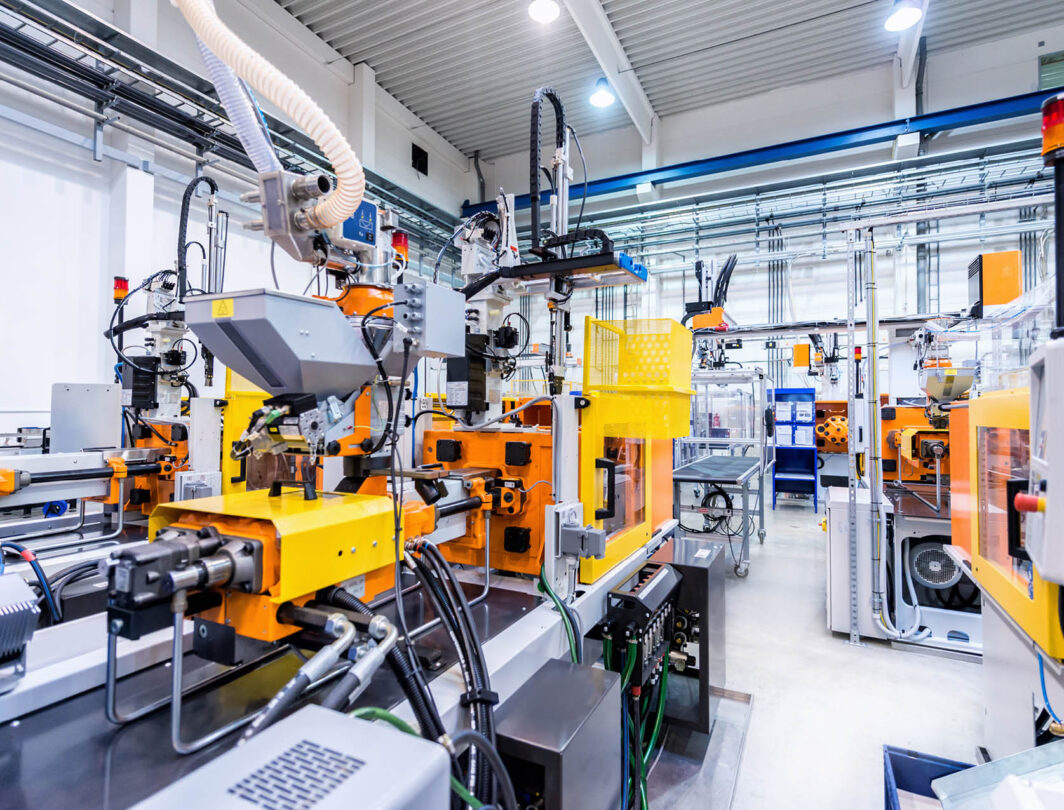Business process
Industry 4.0 tips for building your digital enterprise
Industry 4.0 will reshape manufacturing ecosystems driven by internal improvements and working more closely across value chains. How can you make the most of the next Industrial Revolution for your enterprise?

An Industrial Revolution is an enormous, significant event, and many observers believe we’ve had four of them. The first was initiated by the introduction of the commercial steam engine and the birth of the textile industry. Electricity and mass production sparked the second. And the third was triggered by the computer after World War II.
Professor Klaus Schwab, Founder and Executive Chairman of the World Economic Forum, believes we are well underway with the fourth industrial revolution, or Industry 4.0. It refers to major innovations in technology which are coming into maturity at the same time, embedded by companies around the world, integrating the virtual and physical worlds to bring forth powerful new ways of working. Examples of this technology include:
Internet of Things (I0T)
The fusion of physical objects such as software, sensors and electronic items with the Internet and machine-enabled data collection and transfer. IoT allows real-time communication, initiating physical systems and giving rise to ‘smart cities’. This means that traditional supply chains can become more digitized and connected – becoming completely integrated ecosystems that are fully transparent to the contributing marketing, product development, manufacturing, and distribution departments.
Big data and advanced analytics
With the IoT comes a massive amount of data and the way businesses read and analyze it is crucial, especially if it involves critical events such as power outages or an attempted data breach. In manufacturing, the availability of data from product development, production and testing, for example, can add new dimensions to manufacturing, allowing targeted innovation, marketing and decision making.
Robotics and automation
Robots are already used extensively in the manufacturing world – mechanical arms on assembly arms for example. The next Industrial Revolution could see the contribution of robots massively increasing, and with the ‘smart factories,’ we could look at these robots taking ownership of manufacturing and bringing products to customers by themselves, thanks to computing and communication systems being linked to physical systems.
Simulations, 3D printing, and augmented reality
Already commonplace today, goods can be virtually modeled and tested, saving time and reducing the materials, efforts and money spent. Through 3D printing, we can see the creation of customized, complex and lightweight designs at remarkable speeds, while augmented reality sees a future where employees can be trained on the job far more effectively than with paper or monitors.
A few years ago, business leaders in sectors like manufacturing may have considered Industry 4.0 as the latest technology buzzword, but research from PwC’s shows that many business leaders are already putting down investment and that organizations that didn’t were at risk of being left behind
PwC claims that Industry 4.0 will revolutionise industrial production, with businesses on average generating 3.6% p.a. cost reductions until 2021, driven by internal improvements and working more closely across value chains. They also expect to make 2.9% p.a. in increased revenues by digitizing products and services, as well as developing new digital service offerings. 33% of industrial companies say they’ve already achieved advanced levels of digitization, while 72% of companies expect to achieve advanced levels of digitization by 2020.
Free ebook: Streamline your business operational process
Discover how 3 technology trends can help you overcome today’s top 4 industry challenges.

Industry 4.0 will reshape manufacturing ecosystems
The value that companies get from new technologies could (or should) be able to exceed low-single-digit cost savings. A report from Boston Consulting Group suggested that although American manufacturers recognized Industry 4.0 value, they are approaching the opportunity in piecemeal fashion and could miss significant business benefits. BCG said that to succeed, companies must set ambitious goals and capture value rapidly over a transformation spanning many years.
Justin Rose, A BCG Group partner and co-author of the report said, “Industry 4.0 stands out as a means of generating significant productivity gains. The real value is achieved when manufacturers maximize the impact of these advances by combining them in a comprehensive program.
BCG partner Vlad Lukic and fellow co-author of the report said, “Our findings point to the need for U.S. manufacturers to gain a deeper understanding of how they can apply Industry 4.0 and accelerate the pace of adoption. The winners will approach the race to Industry 4.0 as a series of sprints, yet manage their program as a marathon.”
Industry 4.0 will also have an important role to play across the pond, according to the independent UK industry-led Made Smarter Review, led by Siemens UK CEO Professor Juergen Maier. It said that over ten years, industrial digitization could boost UK manufacturing by $455bn, increasing sector growth by 3% and creating a net gain of 175,000 jobs. And recently, the Confederation of Business Industry put out a call to action to business leaders to unite behind a ‘leapfrog’ industrial strategy to win with Industry 4.0. Again, the message was that organizations needed to wake up quickly and make quick decisions on how they plan to adapt.
Dean McGlone, Sales Director at Finance Automation company V1, said, “We’ve seen organizations embrace our technology to automate financial processes in their finance department and in fact, across their organization. Is it changing the face of the finance team? Absolutely.”
“But the reality is that it is removing mundane tasks that can be effectively streamlined by cutting edge technology and driving productivity gains. These time savings can free up staff to focus on more high-value, strategic roles – such as ensuring the finance team provides the data-driven insight to the rest of the business about new opportunities and trends so that businesses can make informed decisions based on the numbers.”
Tips on making the most of Industry 4.0
In a blog post, PwC Chief Technologist Chris Curran said that you can’t leave emerging technology to chance or luck, but that this was a trap many companies fell into due to resource constraints, competing priorities, and different views to how technology can lift a business. He offered five practices a business leader could use to start preparing for the Industrial Revolution.
- Rethink the way you experiment. Make sure that you evaluate technology through a business lens. This will allow you to experiment with technology that can differentiate your company, with the aim of expanding capability so that you can do things your competitors won’t be able to do.
- Engage with your emerging technology ecosystem. Identify the organizations and startups that are working with and researching the tech relevant to your industry, products, customers and markets. Establish working relationships where suitable, and keep an eye on all of them. For example, you could think about partnering up with a university or other suitable educational institution.
- Build your own learning lab. If your enterprise is getting to a certain size, you should certainly start thinking about having an innovation team to get business value from ideas – perhaps through the creation of demos and prototypes. You can share whatever you create internally, or with selected partners and customers.
- Develop a maker’s mindset. Curran said that enterprises should develop thinking which allows them to draw connections across technology and solve real-world problems. He says that ‘makers’ are willing to try, test and fail, get their hands dirty, and share and build on other people’s discoveries.
- Established a process to scale emerging technology. Curran believes that regular enterprise working processes, such as building a business case and planning projects with the financial benefits in mind, won’t work for tech-driven innovation. He suggests processes with shorter stages that includes advancing ideas, developing prototypes, market testing, and scaling.
Kieron McCann, Director of Strategy and Marketing at Cognifide adds “The biggest challenge for traditional manufacturers is to change their culture to adapt to the new reality of Industry 4.0. In short, it comes down to agility. It’s common for manufacturers and engineering-led organizations to want to invent everything in-house. This can lead to long lead times and inflexible planning cycles. This culture can permeate the entire organization which is often oriented around production cycles and product launches.
“The new reality is that businesses need to be clear about where they add genuine value, everywhere else they need to think about how they can quickly integrate other capabilities and then iterate. Everything will involve software, and this software will be powered by data, which in turn will be more and more integrated with a wider ecosystem. Agile working, iteration and continual improvement will become the defacto way of working.”
It’s important to remember that the change being brought about by Industry 4.0 won’t be considered as ‘new’ and ‘cutting edge’ for very long. Because ideas can spread at such a rapid speed, we’ll soon see multiple companies come up with their own versions of the same business products and solutions. Simply playing at innovation won’t be enough to separate your business from the competition – your organization needs serious planning and strategy to avoid falling behind.





